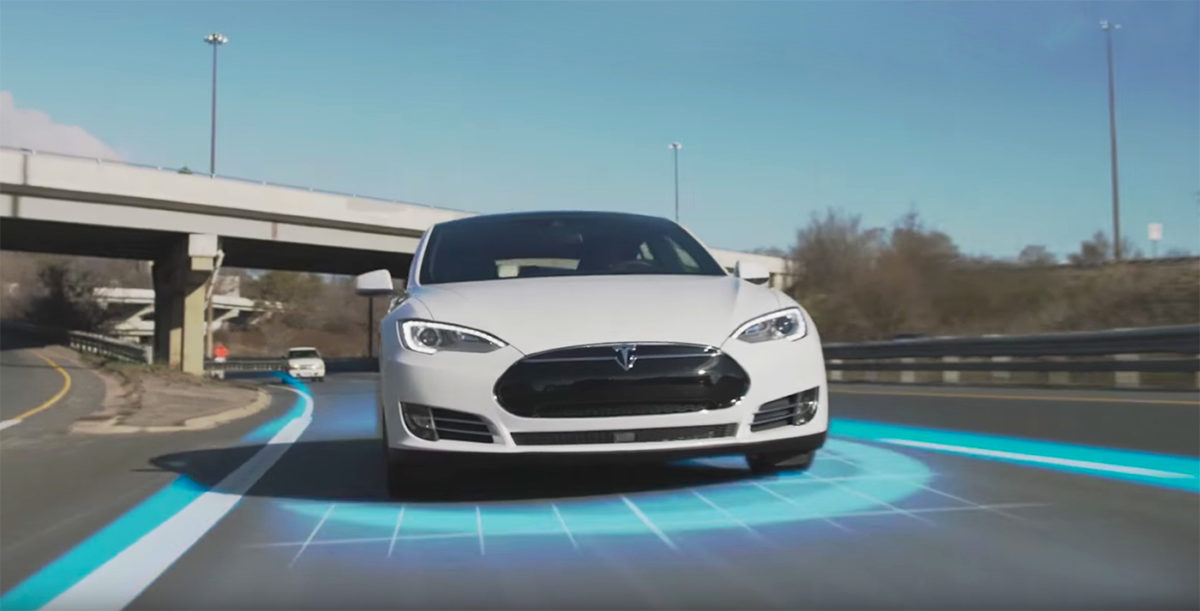May 7 2016
A driver of a Tesla Model S was tragically killed when his car slammed into a tractor-trailer that had veered into his lane.
The Model S operated by Mr.Brown went underneath the trailer of a truck that had turned left in front of the car. The Tesla’s windshield hit the bottom of the trailer as it passed underneath, and the car kept going, leaving the road, striking a fence, crossing a field, passing through another fence and finally hitting a utility pole about 100 feet south of the road, according to the report by the Florida Highway Patrol.

Moreover, it is suspected that the driver Mr.Brown could have been distracted with the auto-pilot on. A witness says that he was watching a Harry Potter movie while the fatal accident occurred. A DVD player was found in the wreckage.
The Company blog post titled “A Tragic Loss” said that neither Autopilot nor the driver noticed the white side of the tractor trailer against a brightly lit sky, so the brake was not applied. It also added that it happened under extreme circumstances.
Tesla’s autopilot software, which debuted last October, uses sensors, a camera, computing, software, and wireless technology to take over various parts of driving like lane changing and steering. It’s available on many of Tesla’s new Model S and Model X cars.
From the moment it was introduced to the public, some drivers complained about the frequent crashes of the Auto-Pilot System. While Tesla denies such claims, this fatal accident would be its first major blow to tackle. How will this affect Tesla’s brand?
Electric car maker Tesla Motors revealed that regulators are evaluating how Tesla’s autopilot software operated during that fatal crash, the first known fatality while a driver used Tesla’s autonomous driving technology.
The Company blog post said
“Following our standard practice, Tesla informed NHTSA about the incident immediately after it (accident) occurred.”
If the software is found to have problems, it could be a blow to Tesla’s brand and the company’s practice of introducing software that it can update with fixes over time. Also, this incident might cast some shadows on the technology itself and the companies like Google and Ford who are experimenting with that technology.
But Tesla had already announced during the debut of Autopilot that the autopilot feature is still in public beta phase and requires the driver’s attention. Also by default, the Auto-Pilot is off and requires an explicit acknowledgement.
The blog added that
When drivers activate Autopilot, the acknowledgment box explains, among other things, that Autopilot “is an assist feature that requires you to keep your hands on the steering wheel at all times,” and that “you need to maintain control and responsibility for your vehicle” while using it. Additionally, every time that Autopilot is engaged, the car reminds the driver to “Always keep your hands on the wheel. Be prepared to take over at any time.”
A host of subsequent videos posted by Tesla drivers on YouTube showed near-misses on the road with Autopilot, prompting Musk to say he might curb the function to minimize the possibility of people doing “crazy things.”
The police report identified Brown as being from Canton, Ohio and as the owner of Nexu Innovations in Stow, Ohio. A biography on the Nexu website describes Brown as a former Navy SEAL. Tesla’s blog post described the customer who died as a “friend to Tesla and the broader EV community, a person who spent his life focused on innovation and the promise of technology and who believed strongly in Tesla’s mission.”
A YouTube account belonging to a Joshua Brown whose personal details, including the company where he worked, match those of the accident victim, includes a video posted on April 5 titled “Autopilot Saves Model S.” In the video, a bucket truck, the type used by people working on utility poles, cuts off a Model S.
The written description of the 40-second video states: “Tesla Model S autopilot saved the car autonomously from a side collision from a boom lift truck. I was driving down the interstate and you can see the boom lift truck in question on the left side of the screen on a joining interstate road. Once the roads merged, the truck tried to get to the exit ramp on the right and never saw my Tesla. I actually wasn’t watching that direction and Tessy (the name of my car) was on duty with autopilot engaged. I became aware of the danger when Tessy alerted me with the “immediately take over” warning chime and the car swerving to the right to avoid the side collision.”
Also in the description, he thanks Tesla with a footnote
“Tessy did great. I have done a lot of testing with the sensors in the car and the software capabilities. I have always been impressed with the car, but I had not tested the car’s side collision avoidance. I am VERY impressed. Excellent job Elon! Note: I have over 39,000 miles on the car and I’ve had it since mid-July 2015. Hands down the best car I have ever owned and use it to its full extent.”
Just 11 days after the May 7 crash Tesla sold more than $2 billion of stock at a price of $215 per share.
Carol J. Loomis, a veteran financial journalist working in Fortune Magazine said that the electric car maker Tesla had not disclosed the information about the crash to its shareholders. The company had had marketed Autopilot vigorously as safe and important to its customers. Elon Musk replied that the Autopilot Death is not material to the value of Tesla.
He also pointed out the rise in Friday’s stock value of Tesla after the company made public the news of the crash through its post the night before.
Musk also responded to Fortune editor Alan Murray on Twitter:
@alansmurray Yes, it was material to you — BS article increased your advertising revenue. Just wasn’t material to TSLA, as shown by market.
— Elon Musk (@elonmusk) July 5, 2016
The Company post also added
“This is the first known fatality in just over 130 million miles where Autopilot was activated. Among all vehicles in the US, there is a fatality every 94 million miles. Worldwide, there is a fatality approximately every 60 million miles. It is important to emphasize that the NHTSA action is simply a preliminary evaluation to determine whether the system worked according to expectations.”
Many automakers including Elon Musk contend that the regulations and laws for self-driving cars will move more slowly than the technology.





